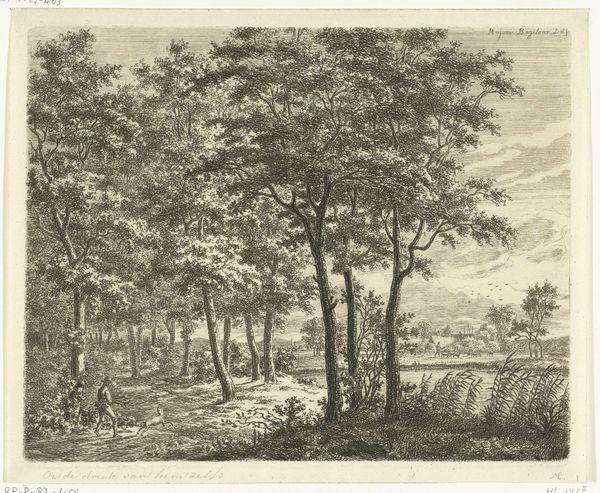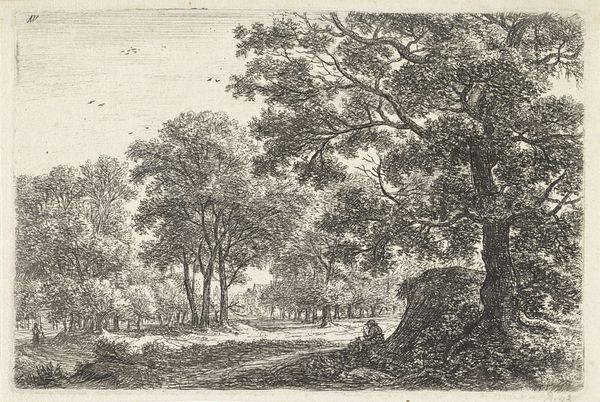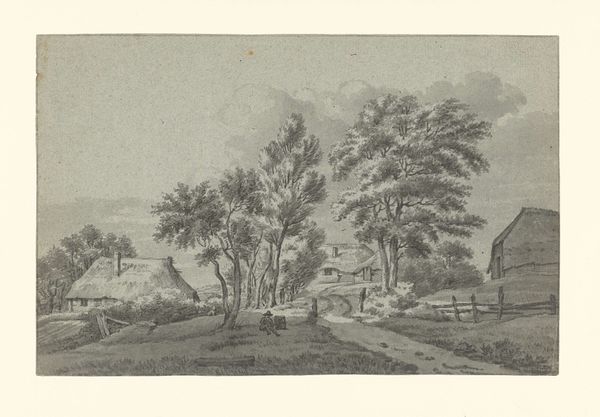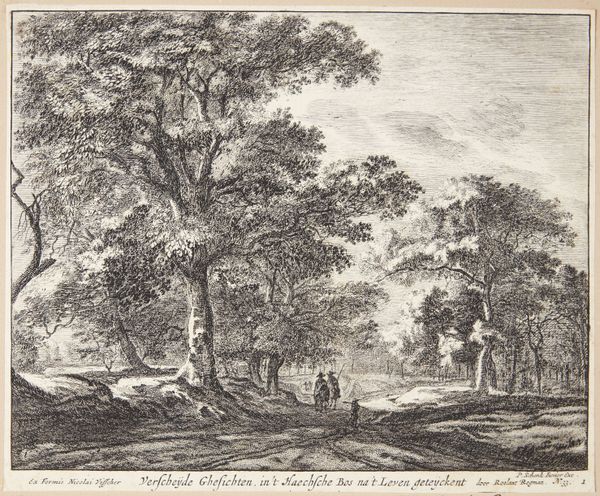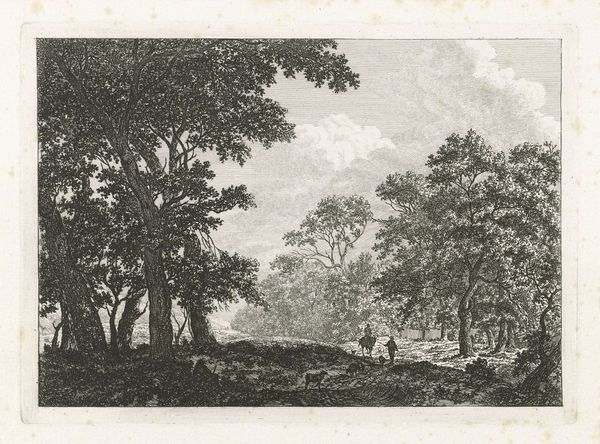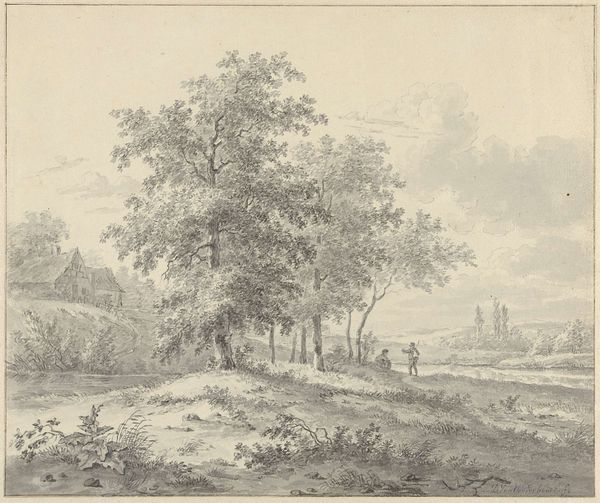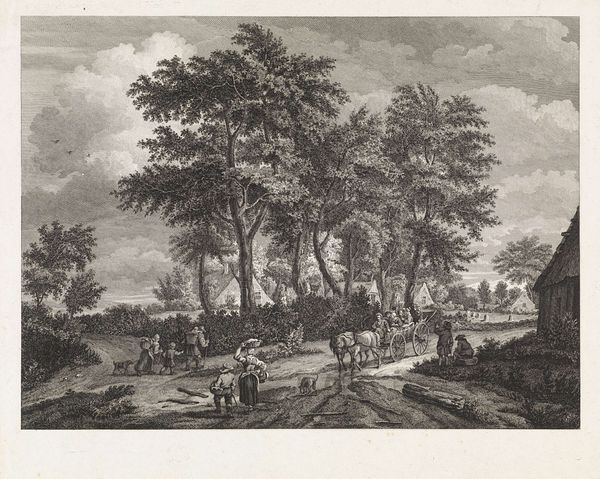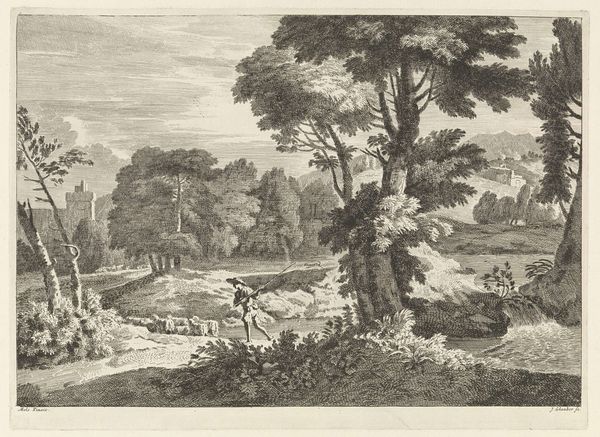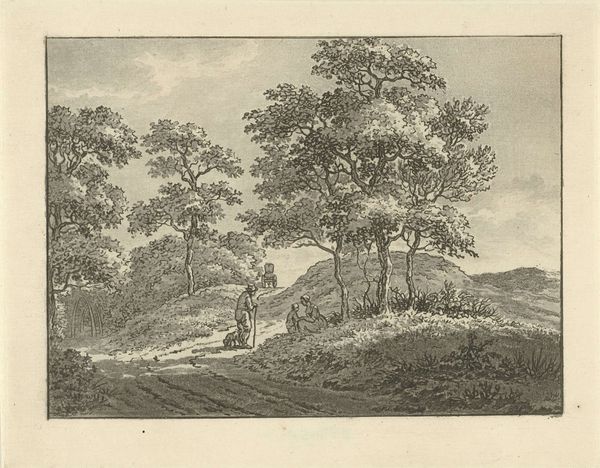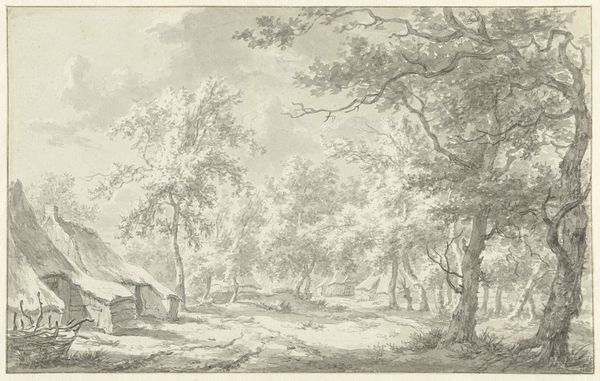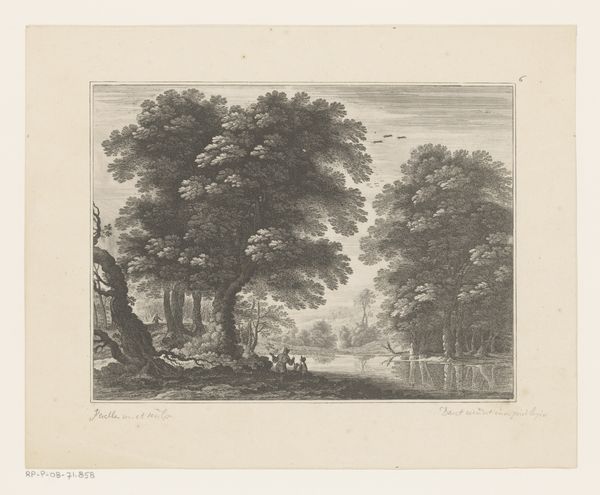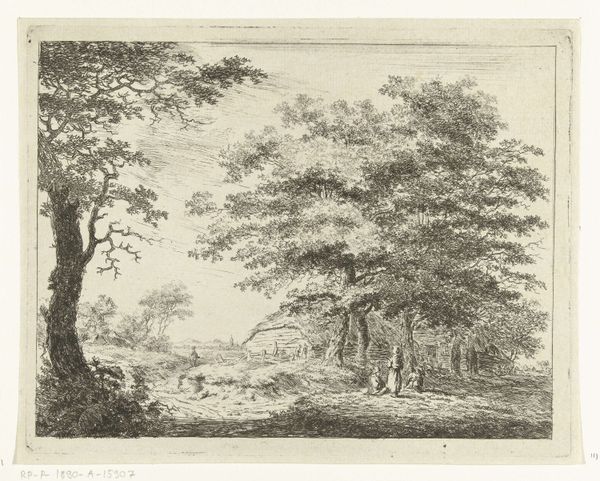
drawing, pencil
#
pencil drawn
#
drawing
#
pencil sketch
#
landscape
#
figuration
#
romanticism
#
pencil
#
line
#
pencil work
#
academic-art
#
realism
Dimensions: height 318 mm, width 393 mm
Copyright: Rijks Museum: Open Domain
Curator: This pencil drawing is called "Landschap met watermolen," or "Landscape with Watermill," and it's attributed to Abraham Vinkeles, likely created sometime between 1800 and 1864. It's currently held here at the Rijksmuseum. Editor: The overall tone that I perceive is one of serene productivity. There is so much subtle, precise line work, a lot of realism in the depiction, especially in the textures of the foliage and architecture of the watermill. Curator: That’s very observant, indeed. Watermills in art often serve as symbols of industriousness, the efficient harnessing of nature’s power. This image fits neatly within the broader artistic movement of Romanticism; it offers a balanced perspective of nature that also emphasizes cultural integration. Notice the relatively seamless transition between forest and field and water. The integration hints at humankind's presence not as destructive but rather as an active component within it. Editor: But let's not romanticize too much. It is interesting to think about the kind of labor that such landscape necessitates. Look at the felled logs, a source of fuel and building material. Pencil as a medium feels very suited here. These landscapes could represent an intimacy with raw resources and nature, where an image in graphite might feel closer to lived experience than a landscape done with paints bought in a store. Curator: Yes, the pencil adds to its intimacy and directness of observation. It aligns well with the image as a mode of reflecting both visible aspects of landscape as well as emotional states linked with that reflection. In its subtlety, the artwork asks what it means for a space to evoke human values and experiences. Editor: A key feature, for me, are those horizontal lines across the road, like freshly felled trees. Are those lines intended as visual pause to mirror what one might feel within nature at large? What considerations governed the use of graphite? Its price? Its availability? Curator: Such questions shift how we consider not only the image but our relationships to that naturalized cultural space and also what it might symbolize. Thanks to your points, it becomes so much more interesting! Editor: And thanks to you for explaining so thoroughly what symbolic place the work has in art. It goes to show that what first appears "calm" in observation is, with examination, active with work and value.
Comments
No comments
Be the first to comment and join the conversation on the ultimate creative platform.
